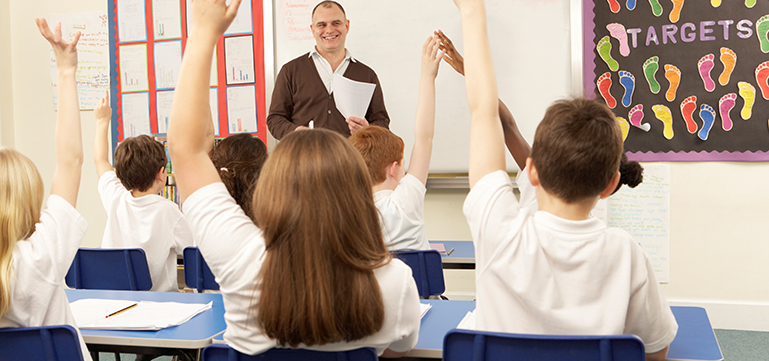Raising attainment through monitoring pupil progress

Maendy Primary School is situated in Torfaen, in the Cwmbran area. It provides education for pupils aged from three to eleven years. There is a 16 place Assessment Resource Base for foundation phase pupils that serves the Torfaen area. There are 235 pupils on roll, including 28 part-time nursery places and 13 Rising 3 places1. The school also hosts the Torfaen Assessment Centre for primary aged pupils with behavioural, emotional and social disorders (BESD).
Context and background to sector-leading practice
In 2009, the school recognised that the standards at the end of both key stages at the expected level were only achieved by a majority of pupils, and only a very few pupils achieved at the higher level. As a result, a ‘Raising Attainment Group’ (RAG) was established. The work of the group has developed significantly over a period of years, and the practice is a fully embedded system at the school, resulting in a record of sustained high standards.
Description of nature of strategy or activity identified as sector-leading practice
The RAG meets half termly, and consists of five members. Members are changed regularly to build the capacity of staff in making accurate teacher assessments, and to recognise and manage identified school variance in standards. A timetable of meetings and up-to-date pupil cohort attainment data is provided for teachers at the start of each new year. Individual pupils and the percentage of cohorts achieving at the expected level and at the higher-than-expected level are identified, as are those pupils who require targeted support to increase their rate of progress.
All staff are provided with agreed guidelines and expectations for marking, presentation of pupils’ work and key stage appropriate target and assessment sheets. Prior to every meeting, teachers ensure that pupils’ books have the appropriate assessment and target sheets in place, and that these are up-to-date. Teachers also provide revised data sheets identifying pupils’ current levels of attainment, including highlighting the attainment of pupils eligible for free school meals. The lead member of staff with responsibility for the RAG selects at least three pupils from each cohort and identifies the focus for subsequent book scrutiny. The focus areas are selected according to current school needs and initiatives, for example the digital competency framework or maths skills. Pupils’ books are monitored individually by RAG members who are allocated non-teaching time. At the subsequent meeting, members provide their own teacher assessments for individual pupils’ work. They also give their views of skills used across the curriculum, the planning for the provision to meet the individual ability needs of pupils, the quality of teacher and support staff marking and presentation of pupils’ work. The RAG discuss and reach agreements on teacher assessments, and identify any areas of best practice or areas that require improvement. The group records minutes and prepares feedback for the next staff meeting. For teacher assessments not agreed by the RAG, any pupils’ books in the identified subject are reviewed by two RAG members in consultation with the teacher. The RAG lead provides individual written evaluations to all teachers, which inform performance management reviews.
What impact has this work had on provision and pupils’ standards?
During the school’s inspection, there were seven teachers with less than two years of experience of working at the school. Standards of teaching and assessment for learning were judged as consistently good. The work of the RAG supports a consistent approach to planning, delivery and marking, and assessment. Areas of identified best practice are shared half-termly at whole staff meetings. Plans to support identified areas for improvement for individuals or the whole school are put in place immediately. The tracking of individual pupils and cohort attainment half-termly ensures that the high expectations set by the school are met.
How have you shared your good practice?
The headteacher was seconded by the local authority to share this practice with other Torfaen schools.
Several schools from other local authorities have attended RAG meetings to observe the process. The headteacher and deputy headteacher have supported schools in an adjoining local authority to improve accuracy in teacher assessment.
1Once allocated a September nursery place, children born between 1 September and 31 March may be offered an early start in the term following their third birthday, if places are available – this is commonly referred to as a Rising 3 place.